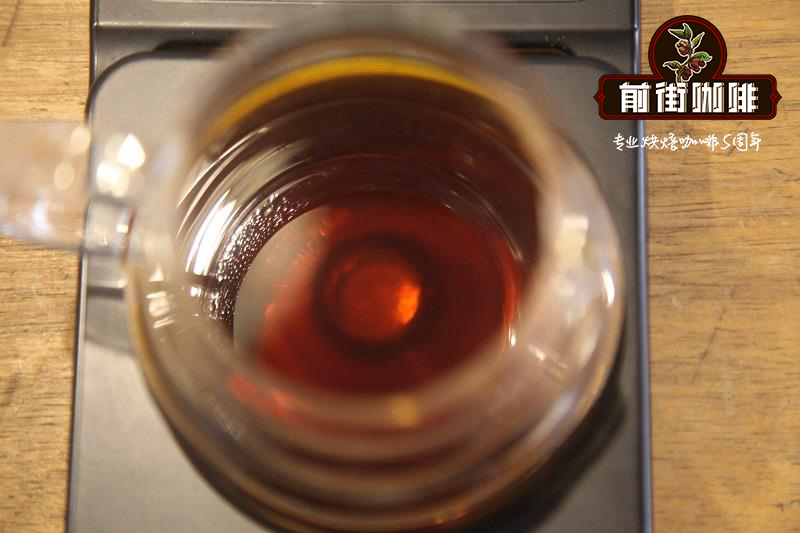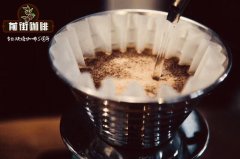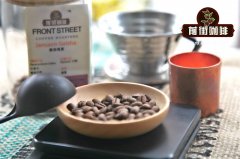Variety and origin of coffee beans-balanced taste how much is a cup of real blue mountain coffee

Professional coffee knowledge exchange More coffee bean information Please pay attention to coffee workshop (Weixin Official Accounts cafe_style)
Front Street-Jamaica Blue Mountain Coffee Introduction
Usually love to drink or do not like to drink coffee friends,"Blue Mountain Coffee" this term, compared to everyone will not be strange! In real life, when coffee was not so popular in China, a cup of "Blue Mountain" on the menu of the cafe teahouse popularized the Chinese people's awareness of top coffee, and also paid a lot of IQ taxes for this. Although everyone later knew that most of the Blue Mountain was fake, the popularity of Blue Mountain Coffee was fully promoted.
Blue Mountain Coffee was indeed an iconic product of the coffee industry in its early years. Almost everyone who heard of Blue Mountain Coffee knew that it was the best coffee in the world and thought that it was one of the best. Its expensive price and "coffee king" reputation complement each other, always by experts and laymen alike sought after, it is said that Queen Elizabeth's favorite is Jamaica Blue Mountain coffee, this reputation makes it form its own characteristics, and become an eternal myth.
Blue Mountain coffee varieties are iron pickups, and iron pickups are coffee beans headed by the three major coffee varieties-Arabica. Arabica is the most commonly used coffee bean in fine coffee today, and its derivative, iron pickup, inherits the first-class aroma and flavor, which is why Blue Mountain Coffee is one of the best coffee sought after by everyone.
Unique geographical advantages are essential factors to achieve a balanced flavor of Blue Mountain coffee. As an island nation in the Caribbean Sea, sea breezes and blue mountains bring abundant rainfall and fertile land to this coffee-growing area. Volcanic soil and relatively low altitude give Blue Mountain coffee its warm and peaceful flavor.
Jamaica's government agency responsible for coffee affairs, responsible for supervising, regulating and directing the cultivation, processing and trade of coffee in Jamaica. The committee set quality standards for Jamaica coffee: Blue Mountain coffee, which needs to be grown at an altitude of 910-1700 meters to be called true Blue Mountain coffee. Jamaica's ZF is also unique in its packaging and transportation of the precious Blue Mountain coffee. Blue Mountain coffee is not packed and transported in bags like other coffees, but in barrels with a standard of 70 kg/barrel.
Blue Mountain coffee according to the size of raw beans, more than 17 mesh blue mountain coffee for NO.1, more than 16 mesh for NO.2, more than 15 mesh for NO.3. Therefore, we usually see Jamaica Blue Mountain coffee NO.1 fresh raw beans, dark green beans, waxy texture, smooth surface, full, round, like a grain from Central America emerald. The Blue Mountain coffee on Front Street comes from this grade.
Blue Mountain Coffee has a relatively fixed consumer group because of its expensive price, and its sales are mainly concentrated in Japan, followed by some European and American countries. It uses Medium Roast, which preserves the coffee's original flavor to the greatest extent and enhances its aftertaste. In the early years, a cup of Blue Mountain coffee sold for hundreds of yuan, and with the development of the coffee industry, the price of Blue Mountain also dropped slightly. The price of a cup of Blue Mountain in Qianjie was only 60 yuan, which was the real Blue Mountain coffee from the highest planting altitude.
Knowledge expansion: Blue Mountain Coffee has maintained its status as the best coffee in the world because of local business policies. In 1932, Jamaica reduced the island's dependence on sugar exports by encouraging coffee production.
In brief: Qianjie is a coffee research center, happy to share knowledge about coffee with everyone, we share it without reservation only to let more friends fall in love with coffee, and there will be 3 low discount coffee activities every month, because Qianjie wants to let more friends drink the best coffee at the lowest price, which is also the purpose of Qianjie for 6 years!
END
Important Notice :
前街咖啡 FrontStreet Coffee has moved to new addredd:
FrontStreet Coffee Address: 315,Donghua East Road,GuangZhou
Tel:020 38364473
- Prev

Introduction to the Origin and varieties of Coffee beans-A study on the reasons for the good quality of Jamaican Blue Mountain Coffee
Professional coffee knowledge exchange more coffee bean information please follow the coffee workshop (Wechat official account cafe_style) Front Street-Jamaica Blue Mountain Coffee brief introduction Blue Mountain Coffee is produced in Jamaica, Jamaica is an island country in the Caribbean. King Louis XV of France shipped three coffee crops to the French colony of Martinique in 1723. Martinique is 1900 southwest of Jamaica.
- Next

Coffee Bean Origin and Taste-introduction of planting conditions and Flavor characteristics of Real Blue Mountain Coffee
Professional coffee knowledge exchange more coffee bean information please follow the coffee workshop (Wechat official account cafe_style) Front Street-Jamaica Real Blue Mountain Coffee brief introduction I believe that many people's initial impression of coffee, mostly from Jamaica Blue Mountain Coffee. In the period when boutique coffee was not yet popular, Jamaica Blue Mountain has always been the representative of the world's top coffee. And the island cafe
Related
- Beginners will see the "Coffee pull flower" guide!
- What is the difference between ice blog purified milk and ordinary milk coffee?
- Why is the Philippines the largest producer of crops in Liberia?
- For coffee extraction, should the fine powder be retained?
- How does extracted espresso fill pressed powder? How much strength does it take to press the powder?
- How to make jasmine cold extract coffee? Is the jasmine + latte good?
- Will this little toy really make the coffee taste better? How does Lily Drip affect coffee extraction?
- Will the action of slapping the filter cup also affect coffee extraction?
- What's the difference between powder-to-water ratio and powder-to-liquid ratio?
- What is the Ethiopian local species? What does it have to do with Heirloom native species?

